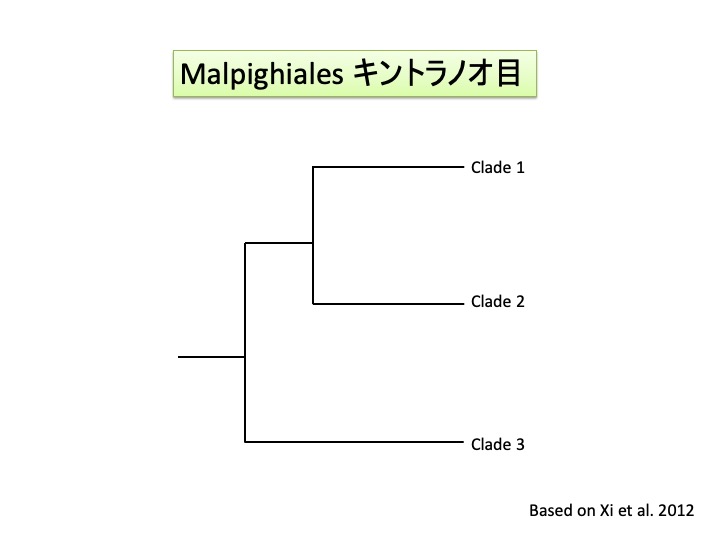
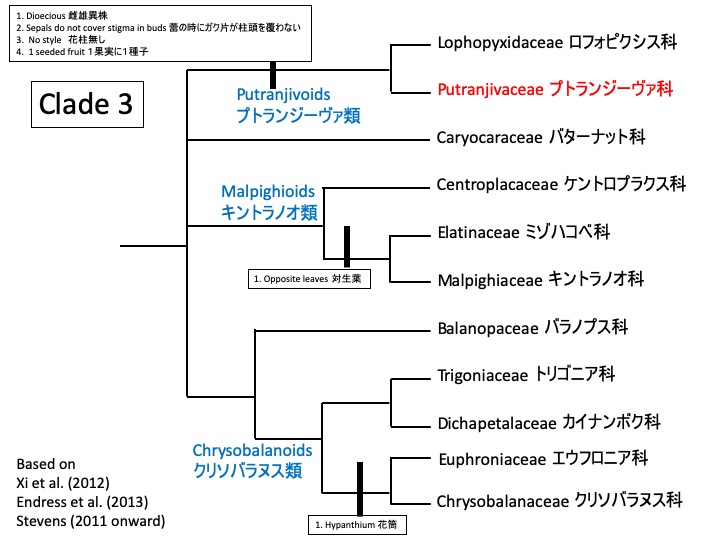
Xi, Z., Ruhfel, B.R., Schaefer, H., Amorim, A.M., Sugumaran, M., Wurdack, K.J., Endress, P.K., Matthews, M., Stevens, P.F., Mathews, S., and Davis, C.C., III. 2012. Phylogenomics and a posteriori data partitioning resolve the Cretaceous angiosperm radiation in Malpighiales. Proc. Natl. Acad. Sci. U.S.A. 109: 17519-17524.
Endress, P.K., Davis, C.C., and Matthews, M.L. (2013). Advances in the floral structural characterization of the major subclades of Malpighiales, one of the largest orders of flowering plants. Ann. Bot. 111, 969–985.
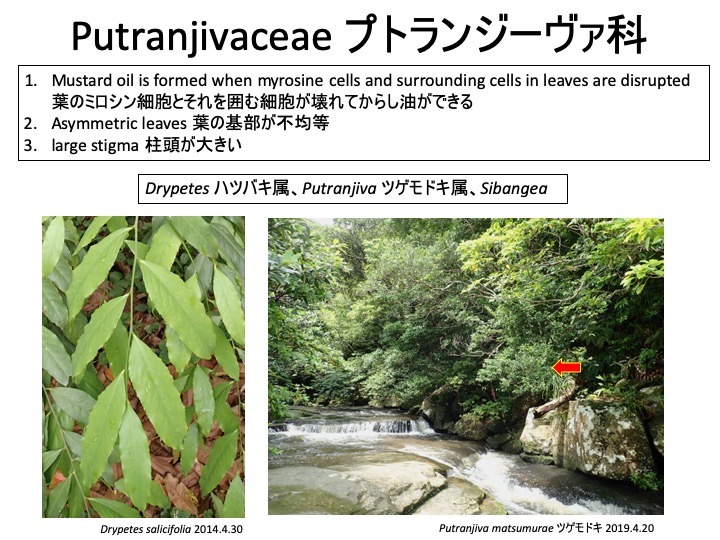
The Putranjivaceae include three genera about 210 species (200 species are in Drypetes) and broadly distributed in old and new tropics to subtropics (Stevens 2011 onward).
プトランジーヴァ科は3属210種からなるが、Drypetesが200種を占める。新旧熱帯と亜熱帯に広く分布する(Stevens on ward)。日本には南西諸島のツゲモドキと小笠原諸島のハツバキが分布する。
Myrosin bodies in vacuoles of myrosin cells are composed of myrosinase. Surrounding cells around myrosin cells contain glucosinolates. When both types of cells are collapsed, mustard oils are formed from glucosinolates by myrosinase. Similar systems to form mustard oils are found in Drypetes and Putranjiva in the Putranjivaceae as well as Brassicales in parallel (Soltis et al. 2018 page 195).
ミロシン細胞の液胞にはミロシナーゼからできたミロシンボディーが形成される。ミロシン細胞の周辺細胞はグルコシノレートを含む。ミロシン細胞と周辺細胞が壊れると、グルコシノレートがミロシナーゼによって分解され、からし油配糖体が形成される。からし油配糖体を作るシステムが、プトランジーヴァ科のDrypetes属の種とPurtranjiva属の種で見つかっており、アブラナ目と平行進化したことになる(Soltis et al. *** 195ページ)。
Soltis, D., Soltis, P., Endress, P., Chase, M., Manchester, S., Judd, W., Majure, L., and Mavrodiev, E. (2018). Phylogeny and Evolution of the Angiosperms (Chicago: The University of Chicago Press).
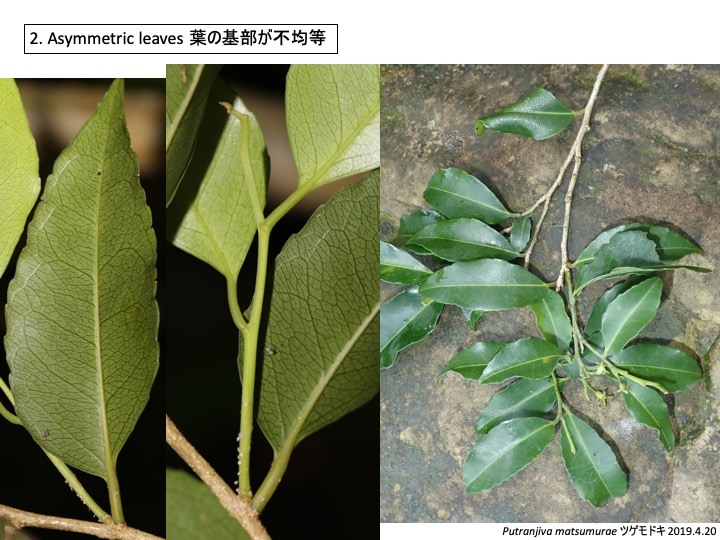
What is the adaptive significance or developmental constraint to form asymmetric leaves.
基部が不均等になることに適応的意義、発生的制約はあるのだろうか?
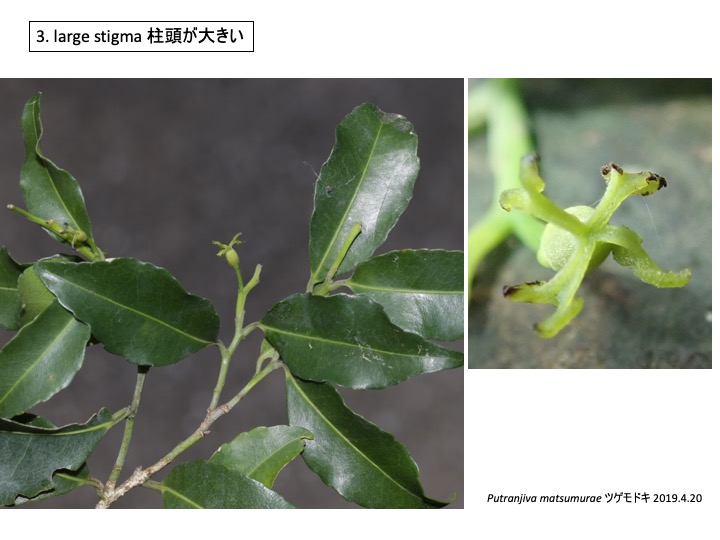
Female flowers of Putranjiva matsumurae are formed at the tips of inflorescences. The pistil is divided into three to four lobes with length similar to the longitudinal length of an ovule. Large stigmas at the tips of divided pistils.
ツゲモドキの雌株の雌花は枝の先端に形成される。3または4分枝した花柱は雌蕊の長径と同長くらいになる。花柱の先端は二分枝する。
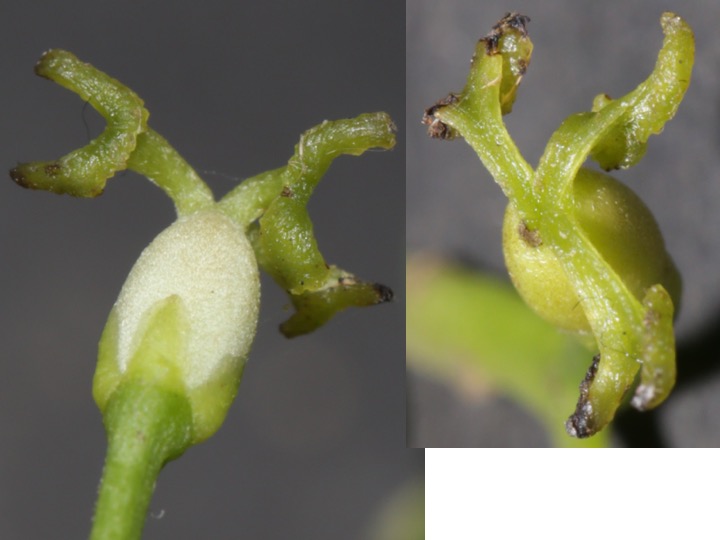
A stigma of each divided style is further divided into two lobes and wrapped.
分枝したそれぞれの花柱の先端にある柱頭は二分枝して背側に反り返る。
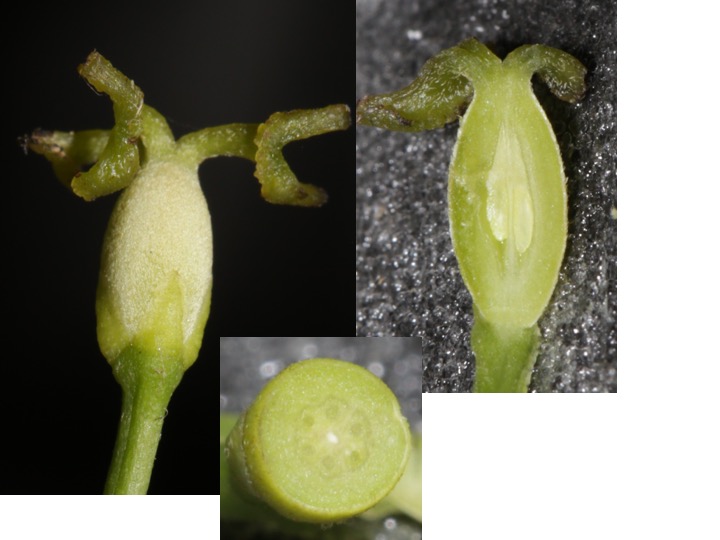
Surface of the ovary is whitish and subtended by four tepals.
子房表面は白く、4枚の花被を持つ。
